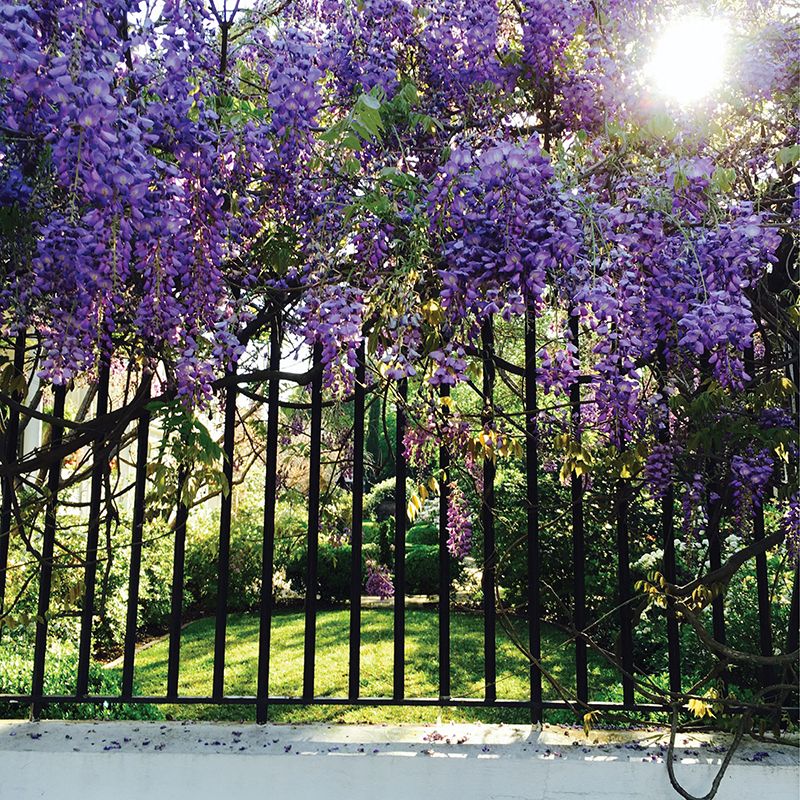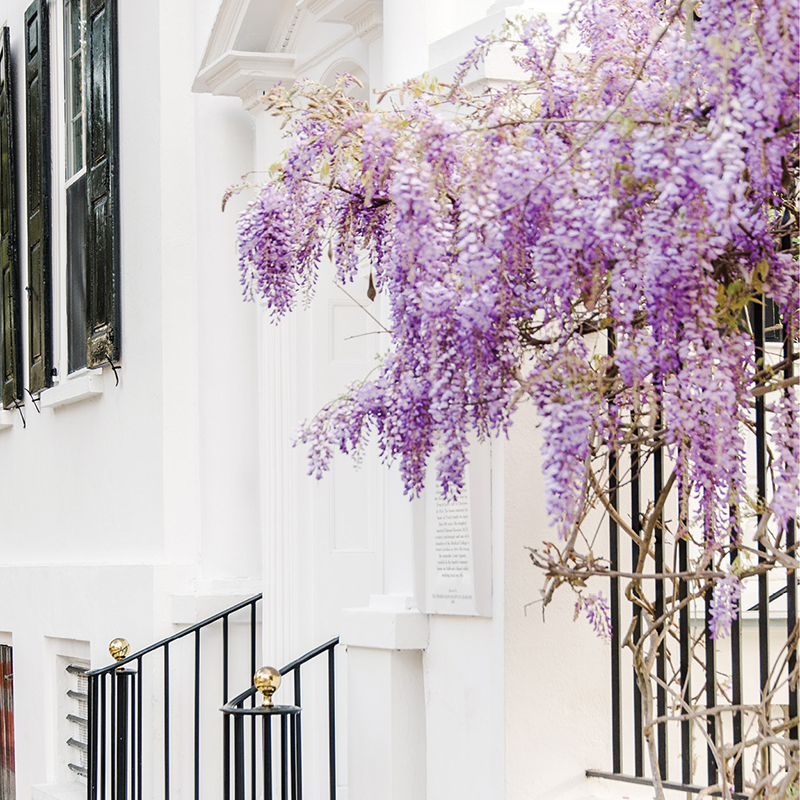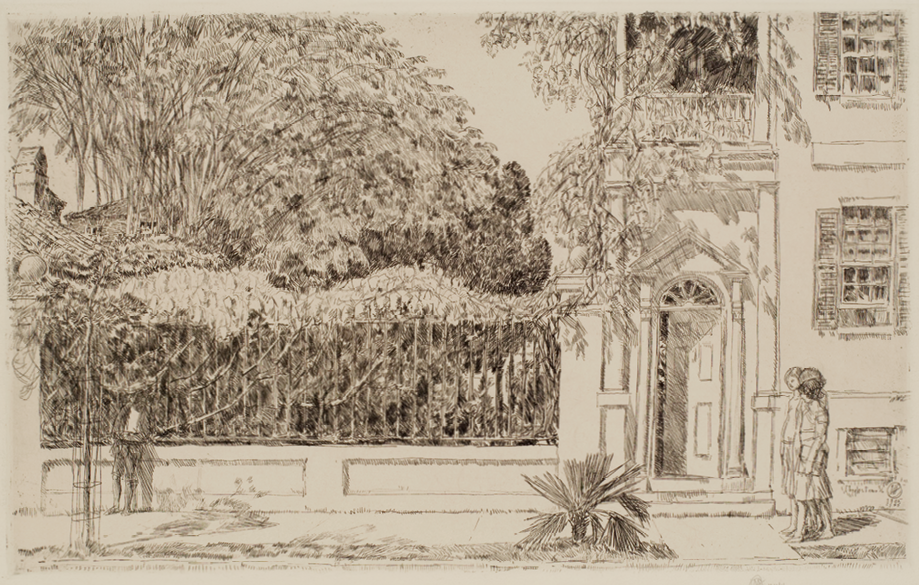Peek into the antique plant's illustrious past, then get tips on pruning the stunning—but highly invasive—vine

At 54 Meeting Street, brilliant wisteria blooms frame a well-tended garden, designed in part by renowned mid-20th-century landscape architect Loutrel Briggs.
Bells may as well ring through Charleston to announce the opening of 54 Meeting Street’s first wisteria blooms. Instantly, pro photographers appear, staging bridal portraits amid the purple cascade. The blogging, hashtagging crowd arrives, dressed in shades that complement lavender. Families come to see the display that heralds spring in the Holy City.
While social media has taken this Wisteria sinensis vine viral, it’s hardly a new attraction. In fact, it has been snagging attention for a century—and the proof’s at the Gibbes Museum of Art.
Artist Childe Hassam visited Charleston back in the spring of 1925. A pioneer of American impressionism, the New Yorker had by then turned to printmaking. In graphite, he drew St. Philip’s, St. Michael’s, and—on April 1—the Timothy Ford House and its teeming garden. Spring in Charleston shows wisteria winding through the iron fence, arching over the front door, and enveloping the second-story piazza.

Today, the original etching is in the Gibbes’s collection, and a cherished print hangs in 54 Meeting’s front entry. “It took years to find it,” says Dr. Bert Pruitt, who has lived there since the 1970s, having restored the home (and its Loutrel Briggs-designed garden) with his late wife, Helen.
Based on old photos, “We believe the wisteria was planted around 1914,” he notes. Not long before its centenary, borer beetles nearly ended the plant’s reign. Pruitt got his hands on an outlawed pesticide and “shocked the dickens” out of them—a worthy bit of rule-bending, in his book, given the joy the flowers bring the city each year.
But when the grande dame does succumb? She’ll live on in countless photographs (#wisteriahysteria) and works of art, including the singular Spring in Charleston.

Noted American artist Childe Hassam portrayed the Timothy Ford House wisteria in his 1925 etching Spring in Charleston.
Pruning 101
Chinese wisteria, Wisteria sinensis, and the less-common Japanese W. floribunda are extremely invasive in the Eastern United States. They begin blooming around the end of March, with draping flowers followed by leaves and fuzzy seed pods.
If Asian wisteria grows in your garden, regular pruning is vital, says Clemson University Cooperative Extension agent Christopher Burtt. Follow his tips to keep the vine in check while eliciting the best blooms.
Late winter:
Summer:
All year:
Spring in Charleston, 1925, by Childe Hassam [American, 1959 - 1935]. Etching on paper, 7 1/4 x 11 3/4 inches, courtesy of Gibbes Museum of Art